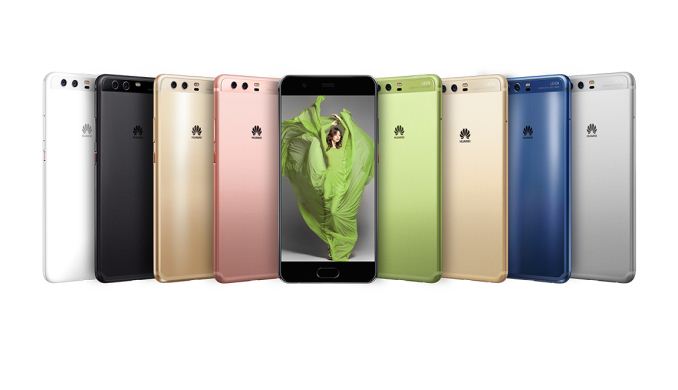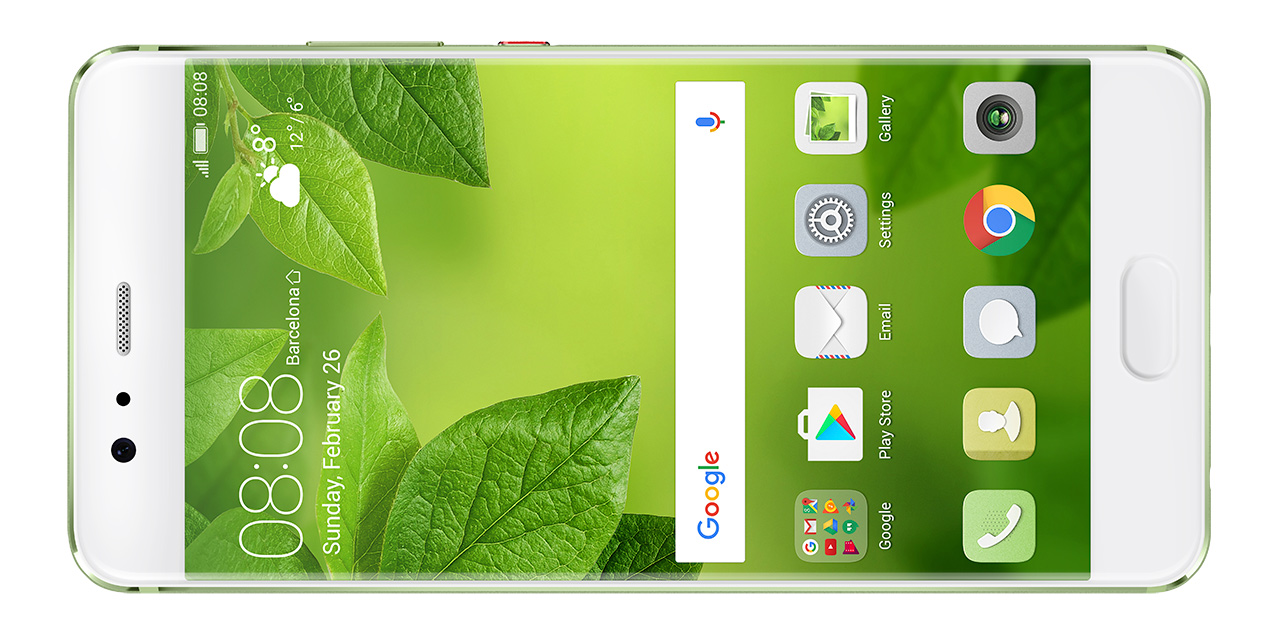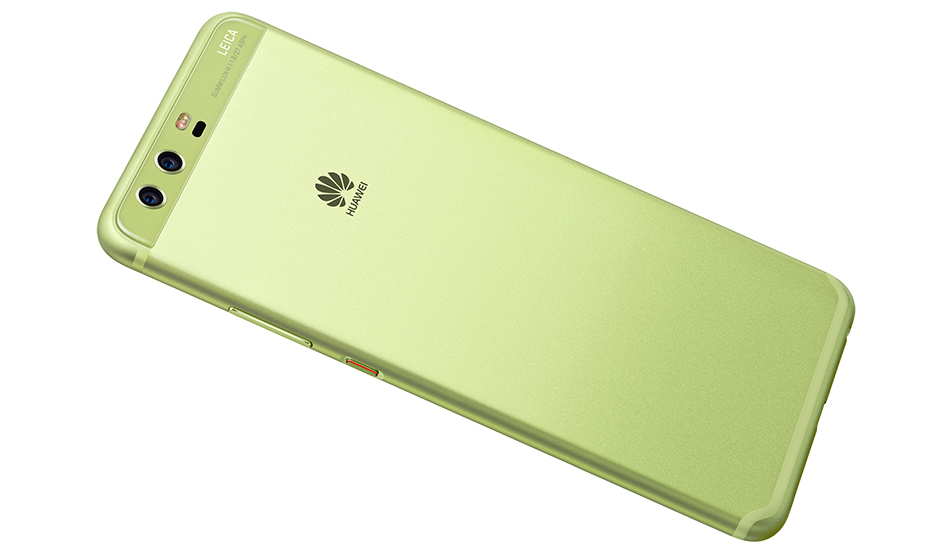Huawei P10 and P10 Plus: Performance & Battery Life Report
by Matt Humrick on May 12, 2017 7:00 AM EST
Huawei is clearly focused on improving the performance of its flagship phones. The P9 and its Kirin 955 SoC performed well in our tests and was smooth and quick during everyday use. For the P10 and P10 Plus, Huawei has tweaked the underlying hardware and software to make them perform even better for longer.
Huawei’s EMUI software includes several features to keep the system feeling more responsive. Using the F2FS filesystem for the /data partition improves storage performance, and Huawei’s new “Machine Learning algorithm” prioritizes system resources (CPU, memory, and storage) to improve responsiveness and performance for the foreground app. Huawei is also using compression to increase the amount of data held in working memory.
| Huawei P10 Series | ||
| Huawei P10 | Huawei P10 Plus | |
| SoC | HiSilicon Kirin 960 4x Cortex-A53 @ 1.84GHz 4x Cortex-A73 @ 2.36GHz ARM Mali-G71 MP8 @ 1037MHz |
|
| Display | 5.1-inch 1920x1080 IPS LCD | 5.5-inch 2560x1440 IPS LCD |
| Dimensions | 145.3 x 69.3 x 6.98 mm 145 grams |
153.5 x 74.2 x 6.98 mm 165 grams |
| RAM | 4GB | 4GB / 6GB |
| NAND | 32GB / 64GB / 128GB + microSD |
64GB / 128GB / 256GB + microSD |
| Battery | 3200 mAh (12.23 Wh) non-replaceable |
3750 mAh (14.33 Wh) non-replaceable |
| Modem | HiSilicon LTE (Integrated) 2G / 3G / 4G LTE |
|
| SIM Size | 1x or 2x NanoSIM | |
| Wireless | 802.11a/b/g/n/ac 2x2 MU-MIMO, BT 4.2, NFC, GPS/Glonass/Galileo/BDS | |
| Connectivity | USB 2.0 Type-C, 3.5mm headset | |
| Launch OS | Android 7.0 with EMUI 5.1 | |
| Software Version Tested | Android 7.0 VTR-L09C432B112 |
Android 7.0 VKY-L29C900B109 |
Inside the new phones is HiSilicon’s Kirin 960 SoC, which uses a big.LITTLE arrangement of four ARM Cortex-A73 CPUs and four Cortex-A53 CPUs. When we looked at the Kirin 960 earlier this year, we found that its A73 core showed higher integer IPC than the Kirin 950/955’s A72 core, but that floating-point IPC generally regressed. The Kirin 960 registered improvements to the memory subsystem too. Even though our lower-level testing produced mixed results, the Kirin 960, which is also used in Huawei’s Mate 9, performed well when running common workloads such as web browsing and photo editing.
In addition to the new CPU, the Kirin 960 also includes a significantly upgraded GPU. The Mali-G71MP8 includes twice as many cores as the Mali-T880MP4 GPU in Kirin 950/955. It’s also based on ARM’s new Bifrost architecture, which includes a number of improvements over the previous Midgard architecture that should help improve shader core utilization.
Huawei, like other OEMs, is currently struggling to procure some of the other internal components—notably NAND and RAM—which can impact overall system performance. Samsung, SK Hynix, and Toshiba have said that they are struggling to produce enough flash memory in the face of increased demand, especially for higher density modules, and issues with ramping up 3D NAND production. This shortage, which applies to DRAM as well, started in 2016 and will likely extend through the remainder of 2017.
With supplies short and component costs rising, Huawei confirmed that it is sourcing memory components from multiple suppliers and stated that it never committed to using any specific type of NAND. Indeed, P10 owners are claiming that some units are using eMMC instead of UFS NAND, along with both LPDDR3 and LPDDR4 RAM. Multi-sourcing is actually very common among smartphone OEMs, particularly larger ones such as Apple, Huawei, LG, and Samsung, for a number of different components, including NAND, RAM, display panels, modems/RF, and camera sensors. Apple has even sourced SoCs from different foundries. Problems can arise, however, if the OEM does not hold its suppliers to the same standards and allows parts from different vendors to vary wildly in performance, which, unfortunately, happens all too frequently.
Based on Huawei’s official statement, we have no way to know who its suppliers are, what components they are or are not using (LPDDR3/LPDDR4, eMMC/UFS), or how many phones are using the potentially slower components. It only said that component selection is random based on the current supply and that there is no way for consumers to know what they are buying before opening the box.
In this report, we’ll establish what components our particular P10 and P10 Plus review units use, and then run them through a series of tests to evaluate everyday performance and battery life. Huawei was able to extend the Mate 9’s battery life over the previous generation, so it will be interesting to see if this is true for the P10 as well.












74 Comments
View All Comments
John Other - Sunday, May 14, 2017 - link
I've not used the Pixel, but can confirm that my P10 is really very smooth and responsive and a pleasure in general use.But I can absolutely imagine that with the OS familiarity Google has, on the same hardware, battery smoothness is entirely possible. Gratuitous car analogy: Mercedes-Benz not quite a Bentley.
On the other side of the coin, I think the physical build, first rate certainly, you will be able to sense as short of a iPhone 7, if you ever once use the iPhone for a while. The iPhone has the better mass distribution of the two, the P10 just a touch weighted on the left. It may be my recovering hand from injury that makes my hold less secure than before, but I went to a store specifically to jog my recollection. IPhone definitely wins in the purely illusory feeling of security in holding balance. I caveat this with the fact that during recovery from my hand in which my index finger was badly broken, I perceived that perfectly flat items like credit cards I gripped were concave. So my touch is not calibrated. However the impression I relate is that which I went to check only last week.
I should further note that my P10 replaced my LUMIA 650. This was too close a call entirely due to the LUMIA 950 XL making the only sensible decision that just does not feel sensible any longer. Other than the state of hardware, and sorely needed Edge advancements, the switch from Windows 10 Creator's Mobile, is one I simply would not have called, was a Microsoft direction visible. I think it is testimony to Steve Ballmer, how much survived, superannuated, that remains very good. Nadella appears to have had to asphyxiate the Ball er legacy plans, as if he couldn't present good reason to shut them down. Microsoft have forgotten that cutting off the air supply is supposed to be done to the competition.... But if Windows Phone is the price of maturing beyond that level of aggression, in a market where we need software integration absent hardware leaps, to drive performance, then so be it. Just to not tell the world, of such a positive game plan, beats me.
Speedfriend - Friday, May 12, 2017 - link
The thought that you can buy a product that may be totally different to the review that you have read is crazy. They should be punished by no one buying themphilehidiot - Friday, May 12, 2017 - link
Indeed - I find it very disturbing that the phones could be either a modern spec (and I have to assume Anandtech were supplied with the best possible article) or falling behind even last generation in some areas. There's a difference between SoCs which are binned and fall within a bell curve and totally different components. Yes, the difference now might be marginal in terms of experience but as software becomes more hardware intensive you expect that perceptive performance to be maintained for a reasonable timeframe - this is one reason why you're paying double for a flagship phone.I'm sorry but if someone offered me a PC and it could come with either a HDD or SSD or DDR3 or DDR4 depending on luck and oh, by the way the cost is the same regardless of what you get and we won't tell you, you'll just have to find out when you get it.... I'd tell them to fuck off. It's an absolute disgrace and sticking two fingers up at your customer. I understand there are shortages and intense competition but if you're going to do this then you DROP YOUR PRICES! You can't charge the same as a modern flagship with the risk of getting components 1-2 years out of date (relative to flagship specification).
In addition to this, you have to consider optimisation may well suffer. You've got a closed system with components all working on one system (UFS) for example and you can spend time optimising everything to work with that. Suddenly, due to suppliers, you have to optimise late in the design phase (probably when mass production techniques have already been devised and they're now looking at supply - I assume, I'm not in the industry, let me know if I'm wrong) for not just UFS but eMMC as well which adds complexity and potentially adds bugs. As WELL as slowing down updates as they end up more complex.
If you're going to violate your customers like this then you have to offer them something in return, ideally reduced cost. They are competing with standardised flagships on price and, whilst I was very interested, knowing I could be getting something markedly different to what I'm paying for makes this brand a no, no for me.
"Yes, sir, you ordered the caviar"
"Well, I appear to have a pear with a turd next to it"
"Sorry, Sir this is how our restaurant operates. We can't always get supply in to meet demand so we carry on charging the same but give you what you'd get in a dirty cafe."
"Well, I'm sorry, I'm returning this and I want a refund"
"Sorry, Sir... it did not say anywhere that you wouldn't get a pear instead and you ARE being provided with something that came out of an animal, so you have no grounds for complaint"
"Oh you can just fu......"
John Other - Sunday, May 14, 2017 - link
The P10 is by far the most modestly priced of the flagships.UK retail carrier unlocked, I think dropped below pounds 600 last week.
I find that I am soundly impressed with the understatement of this phone. Everything about it infuses me with confidence. Only a removable battery, would be my request. (for which surely there must be a elegant engineering solution (plastic backs are decades behind the build quality we expect from any other than budget categories, and the semi liquid packed character must be solvable, alongside a truly solid attachment mechanism, clip on flush not insert and cover)
I can't compare but watching the Formula One qualifying sessions yesterday, on Now TV over LTE, the sound was of a quality comfortably filling my small hotel room, all 4 by 5 yards of it, and I could make out the transmission artefacts hampered car to pit radio, and even the transmission of the cars in corners, on the internal speaker. If this is the general quality to expect nowadays, we're doing well, I don't see the need to be gloomy about the market demand for upgrades etc.
fanofanand - Friday, May 12, 2017 - link
Very generous of you to assume that the gimped phones will still be fine and dandy for the end consumer. You seem to be forgiving of the practice, or at least understanding. I am not. If you can't procure the parts you don't sell the product. This kind of bait and switch is precisely the kind of thing people will point to when they say they will "never buy a chinese phone"Matt Humrick - Friday, May 12, 2017 - link
It's not that I condone the practice, I just want people to understand that this happens frequently and why it happens. I've seen LG use display panels of significantly different quality in its G-series phones, and Samsung use different camera sensors (with equivalent specs) on its Galaxy phones that produce images that look completely different, for example. So the P10 is not even the worst example of multi-sourcing. Huawei needs to be more truthful in its advertising, though.invinciblegod - Friday, May 12, 2017 - link
Apple did something similar where the SOC was manufactured by Samsung or TSMC. Apparently, the TSMC one was slightly better but only marginally.levizx - Friday, May 12, 2017 - link
No, not even remotely close. A9 was merely manufactured by different foundries, they have identical design and spec and are pin-to-pin compatible. Difference is only the average power consumption, but even chips cut from the same wafer have different power consumption.eMMC/UFS2.x OTOH are incompatible standards, they don't resemble each other in any way.
levizx - Friday, May 12, 2017 - link
Problem is QUALITY aside, different suppliers still have nominally similar specs, ie all IPS LCD, same sensor size & pixel count.Now, I can understand mixing UFS 2.0/2.1 since they have similar specs and can nominally perform similarly.
eMMC 5.1 is a totally different standard/interface. I'll be replacing AMOLED with TN LCD.
drajitshnew - Saturday, May 13, 2017 - link
Matt I was very interested when I started the review, but lost most of my interest when the variability was revealed. Then on I just skimmed through the review.What is the point of the review if the system YOU purchase could have memory a generation behind, storage 2 generations behind, and a different bin of processor? There was a quite a ruckus when apple dual sourced CPUs with marginally different preformed.
At the very least either you or your should add caveat emptor or YMMV, in BIG BOLD letters to the end of the review. The reputation of anandtech.com deserves at least that.